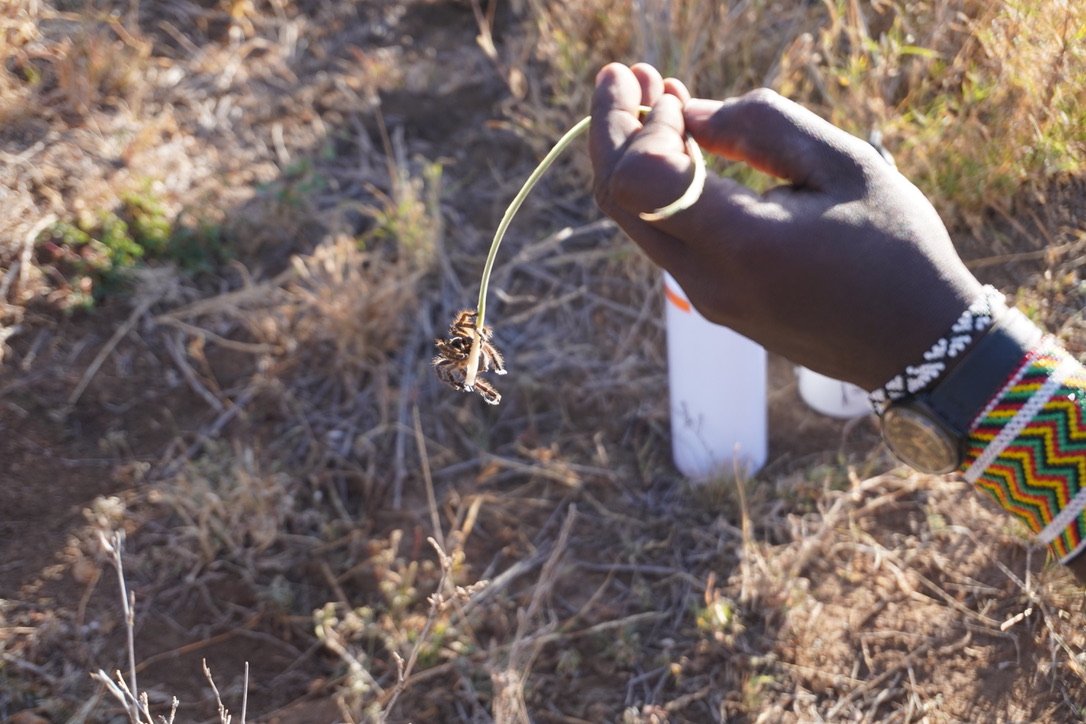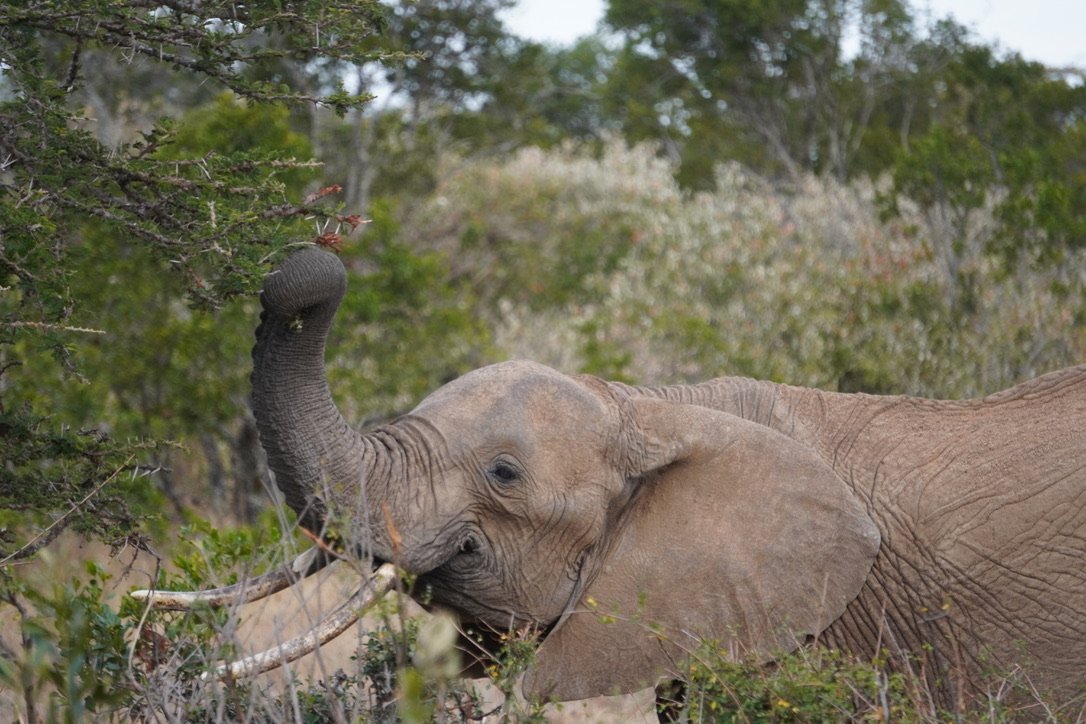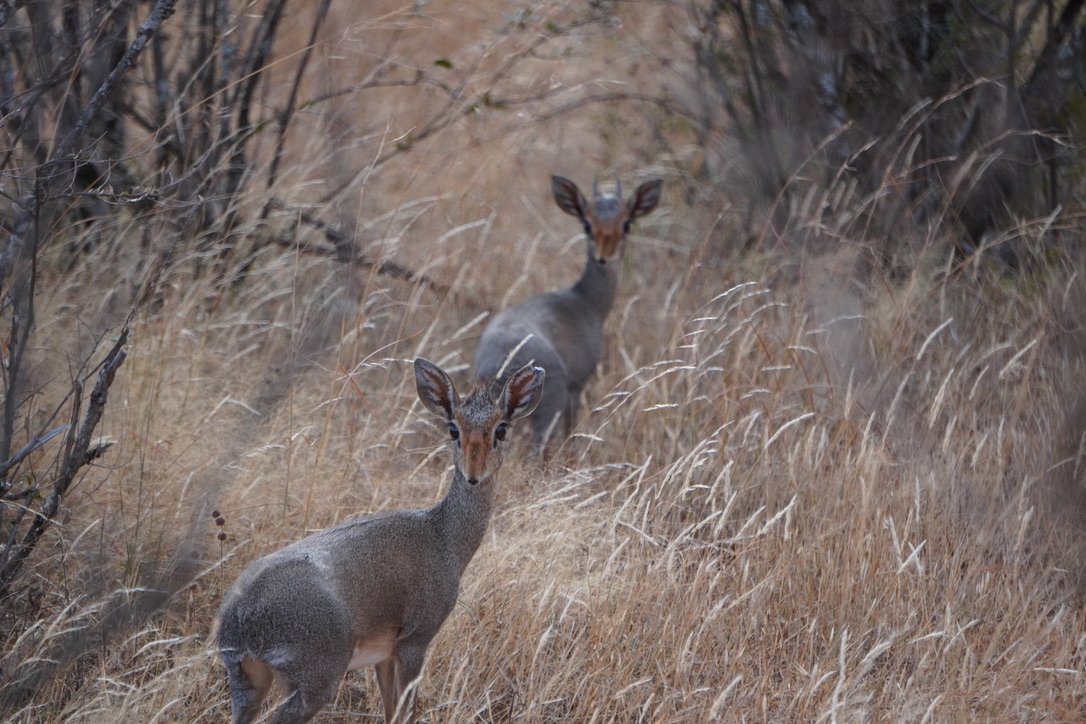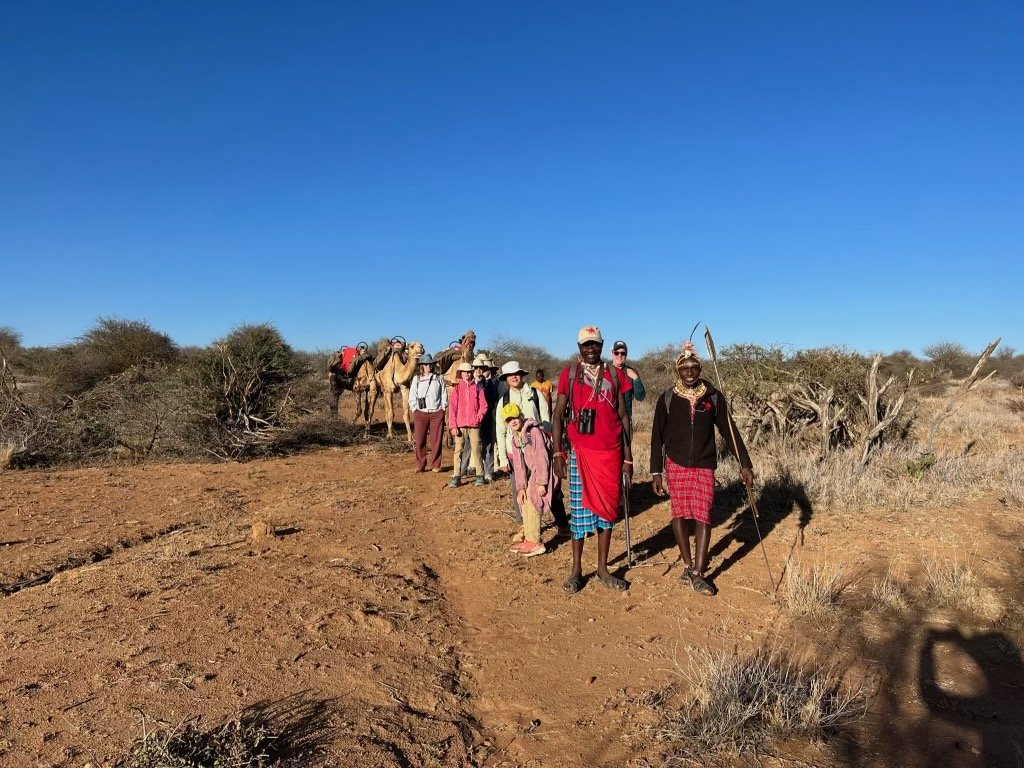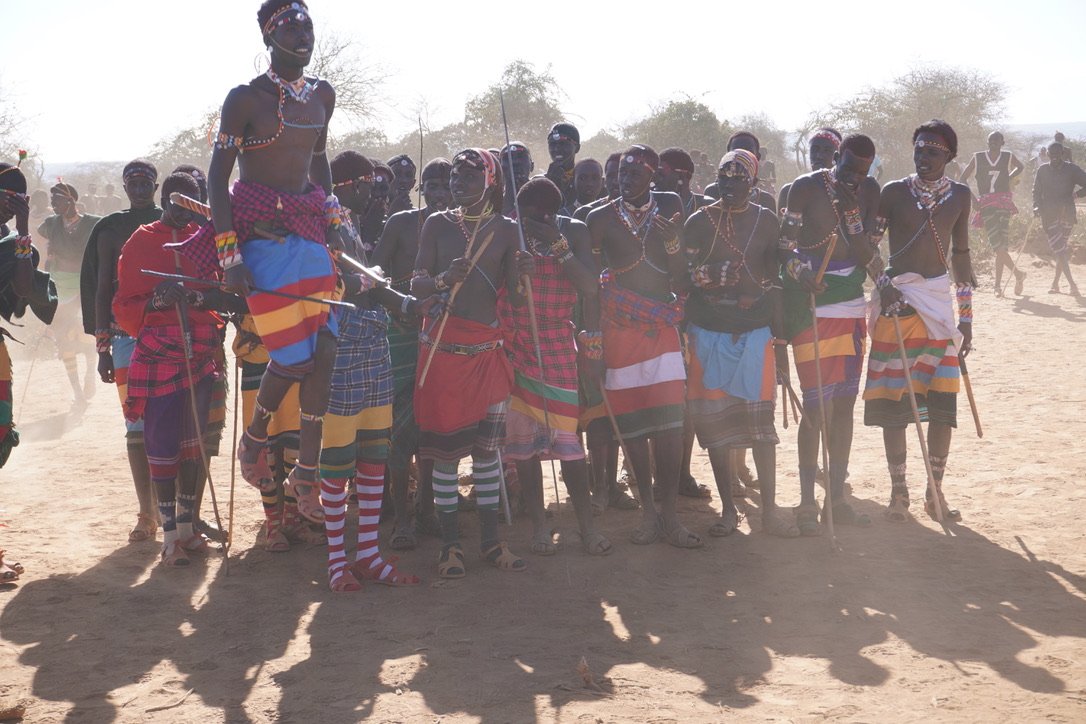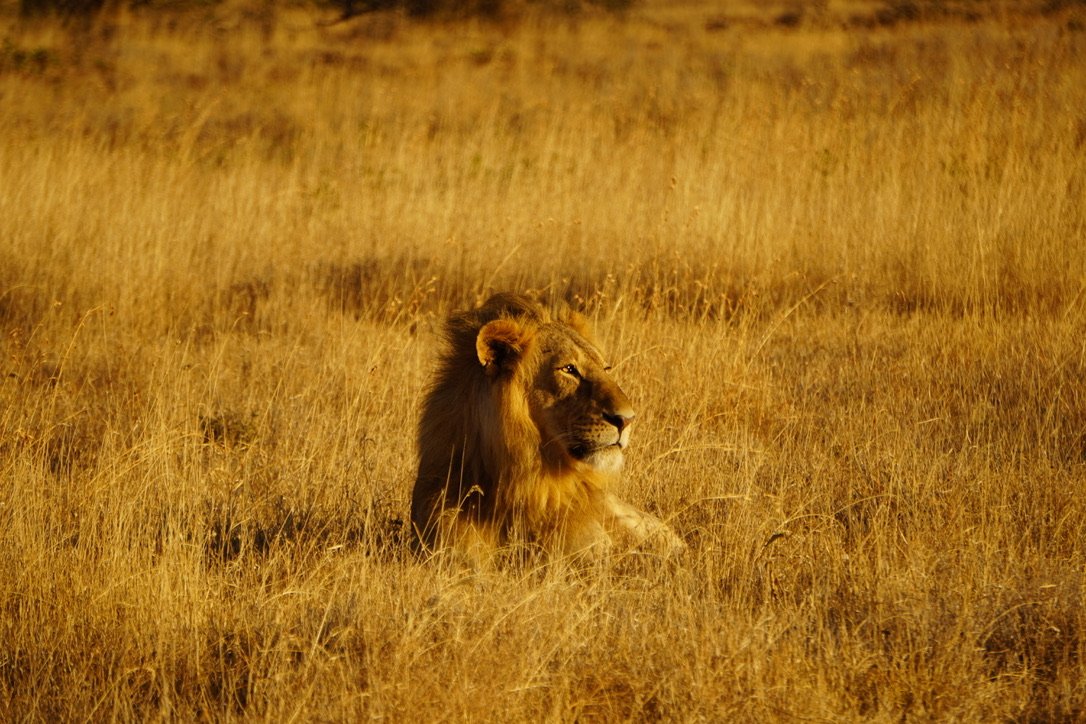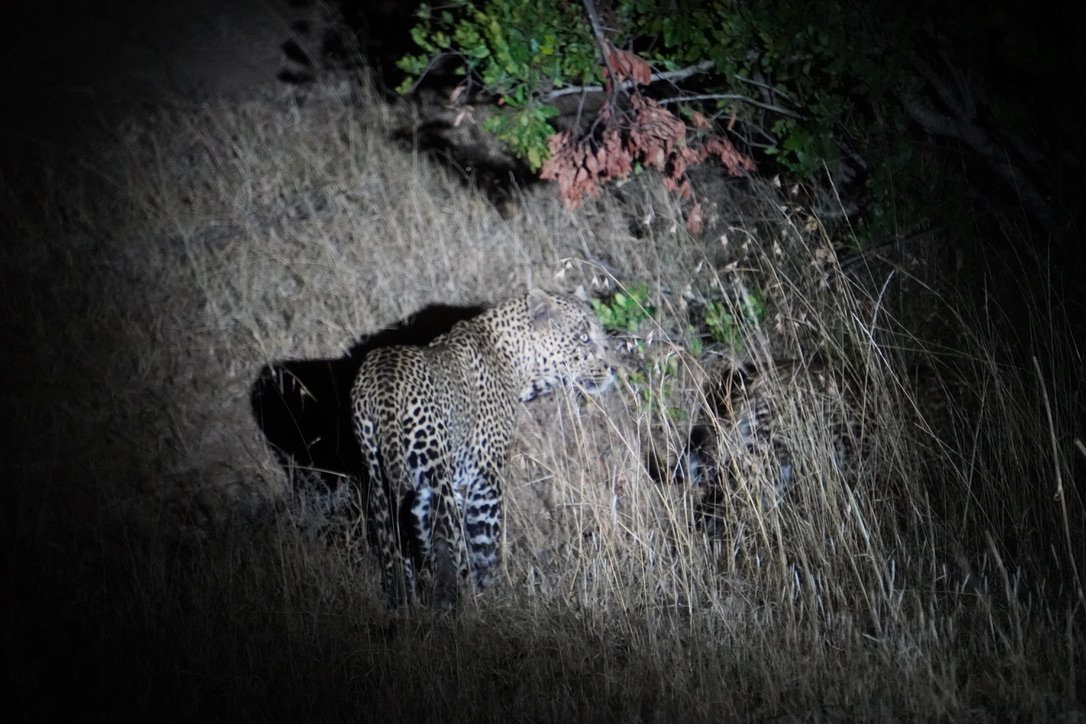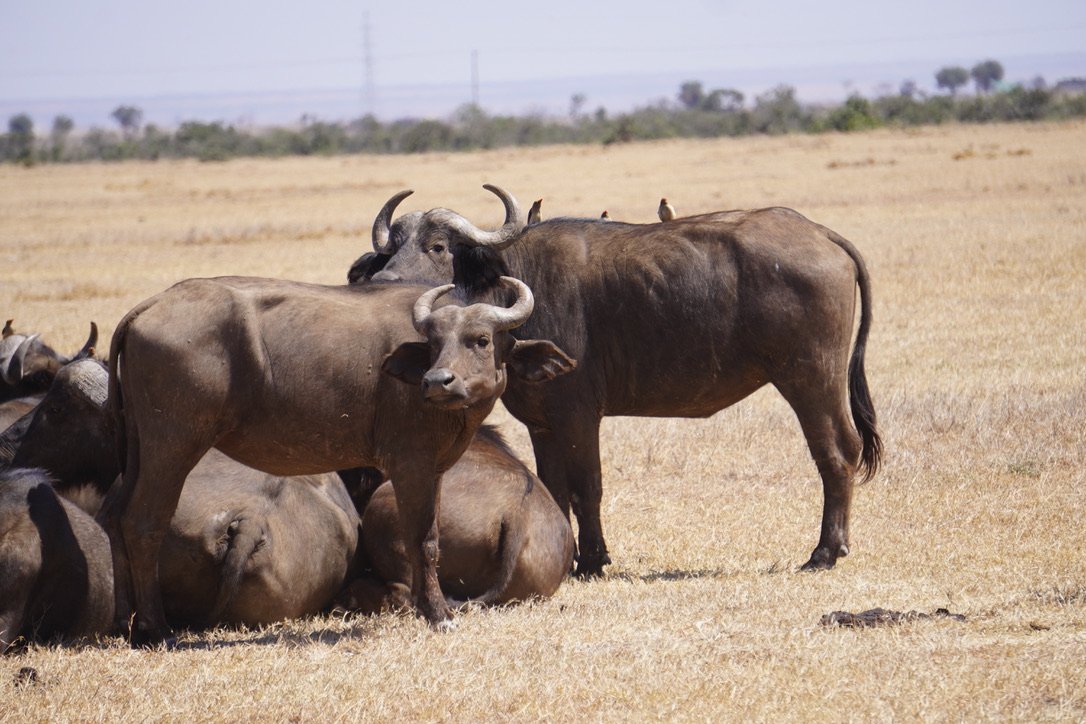Farewell Kenya
(Please note: I am sorry I didn’t write a blog post about our packing lists. Maybe if we have time later, I’ll do it and can make notes on how we did with packing and things lost and acquired along the way.)
How many ways can you go on safari? For us, there were four ways. The one we did the most was driving; I mean, it was a lottttt of driving. Then we went on a walking safari - that was my favorite. We learned a lot about animal tracks and smaller animals, like the baboon spider, which you could not see on a driving safari. We also rode on camels, which was the most painful, but you got a good vantage point. Last but not least, we went on a hot-air balloon ride over the Mara Triangle in the Masai Mara National Reserve.
Baboon spider found during our walking safari in Laikipia
El Karama Lodge was the first place that we stayed at. It is a privately owned conservancy in Laikipia in North Western Kenya. The lodge has an eco-friendly pool, which is a pool that has no chlorine or any chemicals in it so that any animal can drink out of it safely. In El Karama, we did two game drives a day. Each morning, we would wake up at 6 a.m. for a morning safari to see the sunrise and the animals start to stir. In the morning, we could see Mount Kenya clearly on the horizon. Mount Kenya is the tallest mountain in Kenya and the second tallest mountain in Africa. You need to climb 28 rock climbing pitches to get to the top.
Sunrise game drive in El Karama Conservancy
Our guides were John and Andrew, and they drove us everywhere. They were extremely knowledgeable about all the different types of animals. One night, we did a night drive and went out late after sunset, and we saw two leopards mating, which our guides said was an extremely rare thing to see and something they had never seen.
El Karama’s landscape was ankle to knee-high grass with trees - mostly Acacia - dotted around the rolling hills. An Acacia tree is a tree covered in thorns that elephants and giraffes love to eat. The leaves are beneficial for their digestion. The elephants and giraffes swallow the branches whole, thorns and all, which means they must have some pretty thick lining in their mouths and stomachs.
Elephant eating an Acacia tree in El Karama Conservancy
The cutest animal that we first saw at El Karama was the dik-dik. The dik-dik is one of the smallest antelopes and by far the cutest animal you will ever see. One interesting thing we learned is that dik-diks mate for life, so if you see two dik-diks, you are seeing a couple, and if you see three dik-diks, you are seeing a family. If one dik-dik dies, the partner will die soon after from stress.
A dik-dik couple in El Karama Conservancy
The next type of safari we did was a walking safari with Karisia Walking Safaris, also in Laikipia. There was a vast difference between the landscape in El Karama and Karisia. In Karisia, everything was dry and over-grazed by sheep and cows. There was no grass, and all the trees were thorny Acacia trees and shrubs.
We slept in tents in the open bush. We would wake up at 6 a.m. each morning and pack, then have breakfast. After breakfast, we walked to our next campsite. We had 17 camels and a bunch of people who would pack up our campsite and bring our tents and gear to the next site as we meandered through the bush and learned about the animals, plants, and history of the area from our guides. If we got tired, we could ride the camels. We would have lunch and relax once we arrived at our next campsite.
There were lots of animals around while we were walking, including large animals like elephants, giraffes, zebras, and gazelles. Because we were walking, we could also see small animals. The first animal we looked at was the antilion, one of the “small five.” The antilion digs a small crater in the ground that ants fall in; it is impossible for them to crawl out. The antilion sits in the crater's center, buried in the sand. When the ant falls to the center, the antilion grabs it with its pinchers and eats it. We saw these small craters everywhere. Our guides - Paul and Joseph - were extraordinarily knowledgeable about all the different animal tracks and species we saw.
On the second afternoon, Paul invited us to his home village to witness a Moran ceremony called the Maiyian Ceremony for boys ages 18-24 becoming senior Massaai warriors. The ceremony only happens every 10 to 12 years, so we were fortunate to be there. The villagers were extremely welcoming and invited us to participate. The ceremony included lots of chanting and dancing, and at the end of the ceremony, the new warriors would have a competition on who was the best jumper. We were told that the best jumper is married off to the prettiest woman - but maybe that was just a joke.
The northern region of Kenya experienced an extended drought for the three previous years, which killed off many cattle, sheep, and goats. Due to this, many of the Northern Massai are starting to raise camels because the camels are drought-resistant and produce more milk with less water and food. In one day, you can milk a camel five times, and with each milking, you can get 15 liters of milk, which is lactose-free.
The final place we visited was Suruni in the Mara North Conservancy in southwestern Kenya. The landscape in the Mara North Conservancy looked a lot like El Karama, just with fewer acacia trees. My only problem with the place we stayed at was that it was a half-hour drive to the conservancy on the Nairobi Highway. The Nairobi Highway was unfinished, extremely rocky, and bumpy, and you could only travel 35 km/h on it.
My favorite thing we did while we were in Suruni was to go on a hot air balloon ride. We left at 4:30 a.m. and drove for about 2 hours on the Nairobi highway to get to the Massai Mara National Reserve, where the hot air balloons were based. Around 6 a.m., we took off before the sunrise and got to watch the sunrise from the air. In the air, we saw a black rhino - which I spotted - and LOTS of wildebeests. We were traveling over 6 knots when we landed, which means it was a “fun” landing. When you start to land, you first hit the ground and then pick back up, then hit the ground again, and then one final time - the third was the most painful. Then, you would skid on the ground, and when you stopped, the basket was lying on its side.
During our time in Kenya, we saw all of the Big Five, which were considered the five hardest animals to hunt - if you killed them, they were the biggest trophy animals. The Big Five are the lion, rhino, buffalo, leopard, and elephant. These animals are now protected - you are no longer allowed to hunt them. Not only did we see the Big Five, but we saw most of them within five feet! The only exception was the buffalo, which is the most aggressive and dangerous out of the five.
One of 4 lions (3 brothers and 1 lioness) we sat with for over 30 minutes as they basked in the sun in El Karama.
A matriarch and baby elephant we came upon in Mara North Conservancy. The mother seemed angry because of how close were were and we got nervous. When Chris looked at our guide to ask if we were okay, the guide was texting! It’s not just American teenagers who text at inappropriate times, it’s also Maasai warrior guides!
The leopard pair mating during our night drive in El Karama
Buffalo in Ol Pejeta Conservancy. Because of the recent drought, over 50% of the buffalo in Laikipia have died.
This is a blind black rhino named Baraka who is being cared for in an enclosure. He became blind due to cataracts in one eye and a fight defending his territory in the other. He was the first black rhino born in Ol Pejeta so he was named Baraka, which is Swahili for Blessing. He used to be really aggressive, but over time, he has become friendly and calm, so humans can now feed him.
I had an incredible time in Kenya and am excited to see what’s next for us in Uganda. Asante sana for reading!
Here is a list of all the animals that we saw!!!
dik dik
rock and tree hyrax
elephant
lion
giraffe (reticulated, Rothschild’s, Masai)
rhino (white and black)
buffalo (cape)
Impala
Grevy’s + plain zebras
Grant + Thomson’s Gazelle
bat-eared fox
jackal (silverback)
leopard
spotted hyena
hippo
bushbuck
gerenuk
bush baby
hare
baboon
black-faced monkey
pumba (warthog)
white-faced monkey
eland
waterbuck
oryx
hartebeeste
spring hare (Kenyan kangaroo)
topi (blue jean antelope)
while tall mongoose
wildebeest
